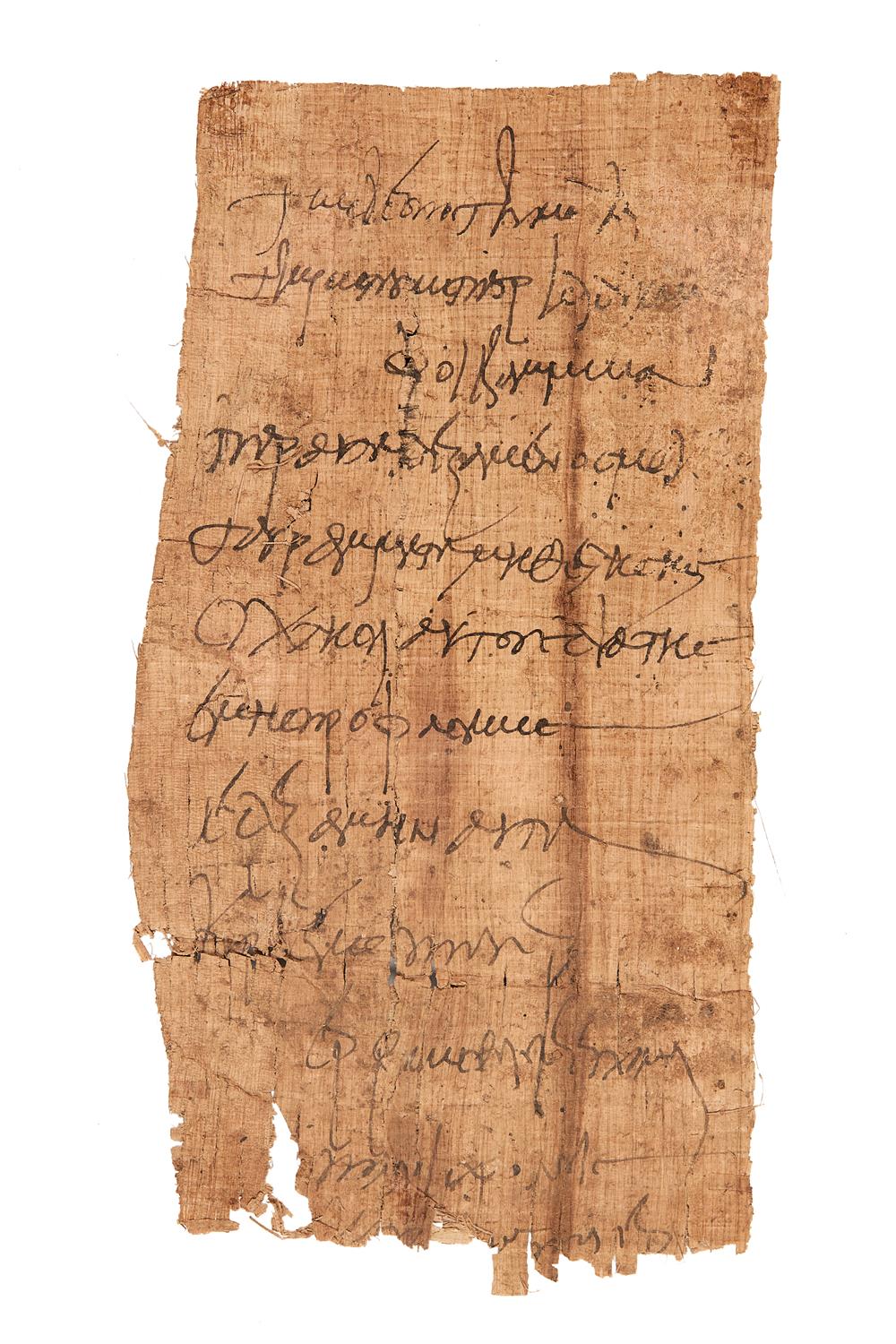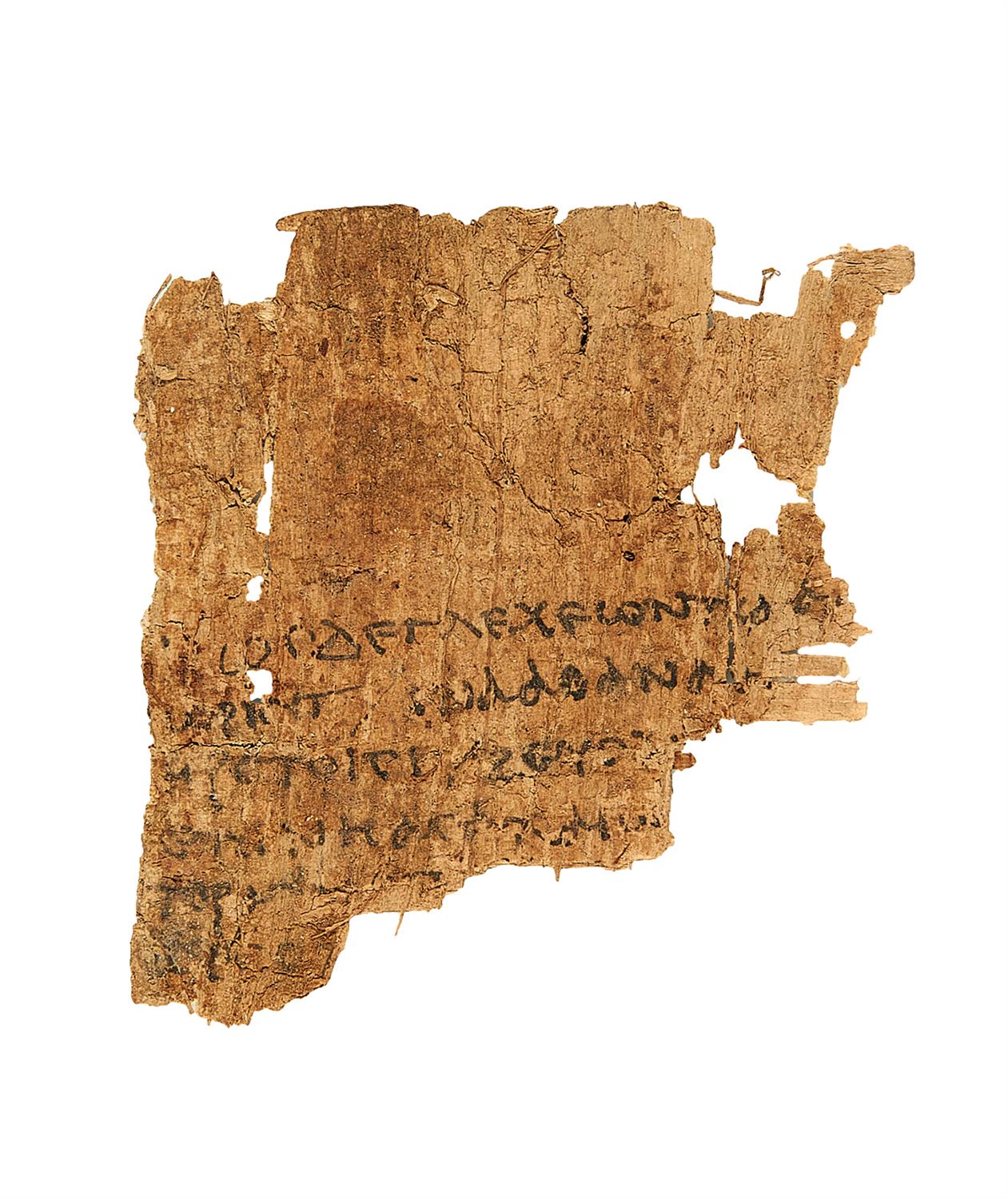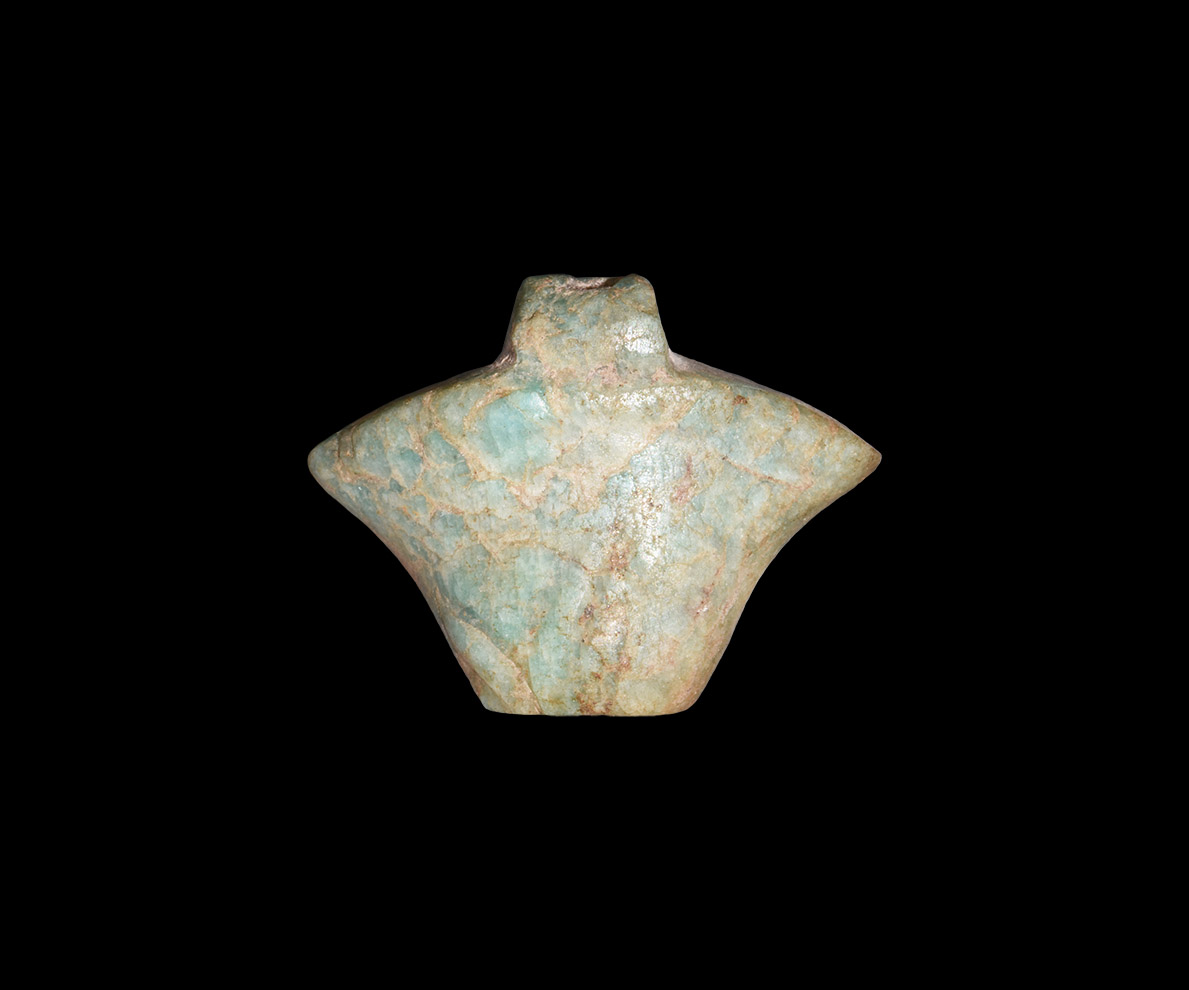on papyrus [Egypt or perhaps Italy, probably first century BC.-first century AD.] Fragment of the top lefthand corner of a document, with remains of 7 lines in Old Roman Cursive, much scuffed and with only a few groups of letters legible, remains of 25mm. of upper border at top, some splits and broken away edges, reverse blank, overall 95mm. by 125mm., set in glass From the collection of Anton Fackelmann (1916-86), conservator of the Vienna Papyrus Sammlung, and recovered by him from mummy cartonnage. Latin is the great forgotten language of the Egyptian papyri. Most of us are familiar with Greek examples, and many others with Hieratic, Demotic, Coptic and perhaps even Arabic, but the tiny number of surviving papyri with any Latin on them has often caused them to be overlooked. The vast database at Papyri.info (the successor to the online Duke papyri database) has a total of nearly 60,000 records for the pre-350 AD. period, and yet of these only 885 papyri have any Latin on them at all, and most of those with only a single word or two. The discovery of any text on papyrus entirely in Latin is a sensation. After the victory of Octavianus Augustus over Mark Anthony and Cleopatra in 31 BC., Egypt fell directly under the Roman Empire, and while Greek remained the primary language of the official administration, occasional proclamations appear to have been disseminated in Latin. In fact, the language and small number of these opens the possibility that they did not originate in Egypt itself, but are documents copied out in Italy or mainland Europe and sent to Egypt. This fragment was most probably written during the lifetimes of Julius Caesar Cicero and Seneca the Younger, and as such, even in the condition it is in, it is a noble relic of the Ancient World and the glory that was Rome. Our thanks to Prof. Harrauer for his help with the identification of the language and script here.
on papyrus [Egypt or perhaps Italy, probably first century BC.-first century AD.] Fragment of the top lefthand corner of a document, with remains of 7 lines in Old Roman Cursive, much scuffed and with only a few groups of letters legible, remains of 25mm. of upper border at top, some splits and broken away edges, reverse blank, overall 95mm. by 125mm., set in glass From the collection of Anton Fackelmann (1916-86), conservator of the Vienna Papyrus Sammlung, and recovered by him from mummy cartonnage. Latin is the great forgotten language of the Egyptian papyri. Most of us are familiar with Greek examples, and many others with Hieratic, Demotic, Coptic and perhaps even Arabic, but the tiny number of surviving papyri with any Latin on them has often caused them to be overlooked. The vast database at Papyri.info (the successor to the online Duke papyri database) has a total of nearly 60,000 records for the pre-350 AD. period, and yet of these only 885 papyri have any Latin on them at all, and most of those with only a single word or two. The discovery of any text on papyrus entirely in Latin is a sensation. After the victory of Octavianus Augustus over Mark Anthony and Cleopatra in 31 BC., Egypt fell directly under the Roman Empire, and while Greek remained the primary language of the official administration, occasional proclamations appear to have been disseminated in Latin. In fact, the language and small number of these opens the possibility that they did not originate in Egypt itself, but are documents copied out in Italy or mainland Europe and sent to Egypt. This fragment was most probably written during the lifetimes of Julius Caesar Cicero and Seneca the Younger, and as such, even in the condition it is in, it is a noble relic of the Ancient World and the glory that was Rome. Our thanks to Prof. Harrauer for his help with the identification of the language and script here.


.jpg)
.jpg?w=400?width=1600&quality=70)

.jpg)





Try LotSearch and its premium features for 7 days - without any costs!
Be notified automatically about new items in upcoming auctions.
Create an alert